I'm due for almost all of it, new iMac, airtags, watch and aTV. Better start saving up.
Got a tip for us?
Let us know
Become a MacRumors Supporter for $50/year with no ads, ability to filter front page stories, and private forums.
What to Expect From Apple in 2021: New Apple Silicon Macs, iPhone 13, AirTags and More
- Thread starter MacRumors
- Start date
- Sort by reaction score
You are using an out of date browser. It may not display this or other websites correctly.
You should upgrade or use an alternative browser.
You should upgrade or use an alternative browser.
For the past few years Apple has had little to no innovation (incremental changes, new Emojis, and spec bumps).
But in the 4th Qtr of 2020 Apple suddenly WOKE UP!!
M1 computers and HomePod Mini are GREAT products and finally...great value.
The M1 is revolutionary. In just a few weeks INTEL went from being the gangsta Alpha to "grandma" (hot, slow, and expensive).
2021 is looking up for Apple. Can't believe how fast my new M1 Mac Mini is. Especially since the Mac Mini has traditionally been the bottom of the line Mac in terms of performance. But now....equal to MacBook Pro. 🥳
But in the 4th Qtr of 2020 Apple suddenly WOKE UP!!
M1 computers and HomePod Mini are GREAT products and finally...great value.
The M1 is revolutionary. In just a few weeks INTEL went from being the gangsta Alpha to "grandma" (hot, slow, and expensive).
2021 is looking up for Apple. Can't believe how fast my new M1 Mac Mini is. Especially since the Mac Mini has traditionally been the bottom of the line Mac in terms of performance. But now....equal to MacBook Pro. 🥳
Not expecting this to happen but really wish Apple would add some HomePod like features to the next AppleTV like the ability to use Siri without the remote.
Any new Mac mini would be a surprise. Some have talk of a more powerful version with more RAM but I’m very doubtful.Mac Mini with native HDMI port? HDMI 2.1?
DisplayPort 1.4 with DSC over Thunderbolt?
Displayport 2.0?
The mini never gets any love from Apple because of its low margins.
Or just a HomePod AppleTV hybrid device.Not expecting this to happen but really wish Apple would add some HomePod like features to the next AppleTV like the ability to use Siri without the remote.
I hope they also lower fees for app developers and businesses. Its sad to see the developers loose 30 or even 15 percent of the time and money they use to build code.
We're expecting 2021 to be an exciting year for Apple thanks to a renewed focus on the Mac. Apple debuted the first Macs with Apple silicon chip in late 2020, and Apple's M1 chips turned out to be unexpectedly powerful, leaving us looking forward to what's next.

New iMacs and MacBook Pro models are rumored for 2021, with even better Apple silicon chips in the works. We can also count on new iPhone 13 models, the Apple Watch Series 7, updated AirPods, a new Apple TV, and more. We've rounded up all of the products that we're expecting to see from Apple in 2021 based on both current rumors and past release information.
First Half of 2021
Apple Silicon iMac
Apple is working on multiple new iMac models that have Apple silicon chips, including both high-end and entry-level models. There have been rumors of a redesigned iMac that features an "iPad Pro design language" with thinner bezels and a 23 to 24 inch screen size.
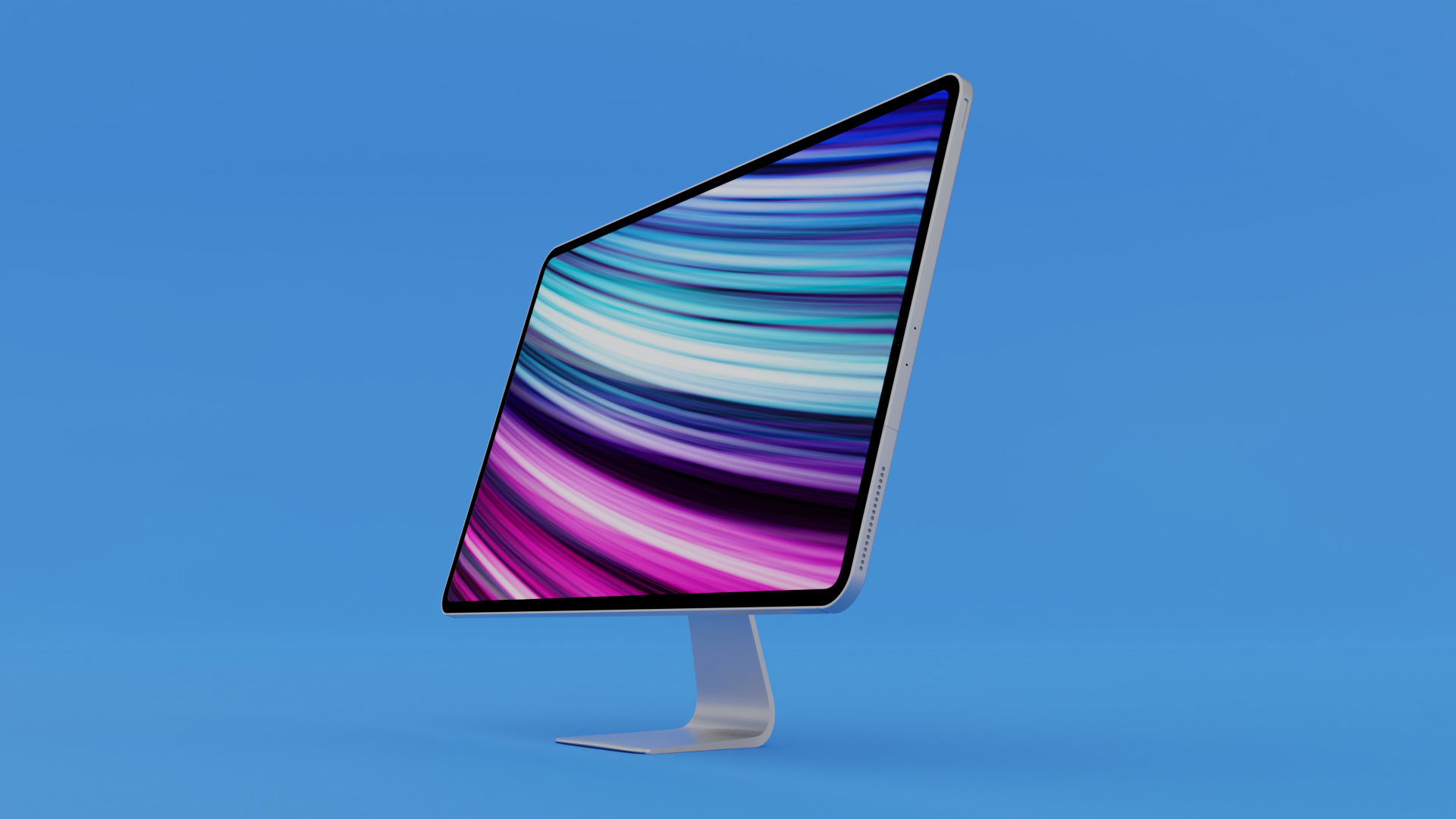
This Mac could perhaps be a larger replacement for the current 21.5-inch model, which would likely be around the same physical size as the existing version if Apple greatly cut down on bezel size.
Apple is working on Apple silicon chip designs with as many as 16 high-power cores and four high-efficiency cores, but high-end desktop models could have as many as 32 high-performance cores, perhaps replacing the iMac Pro. Apple is also working on some significant GPU performance improvements.
The new iMacs are expected to be released in spring to fall 2021, so it's possible we're going to see the long-rumored 23 to 24-inch model early in the year, followed by a higher-end model later in the year.
Additional information about the upcoming iMac refresh can be found in our iMac roundup.
AirPods
Apple is working on third-generation AirPods that have a form factor similar to the AirPods Pro, featuring a shorter stem and replaceable silicone ear tips.
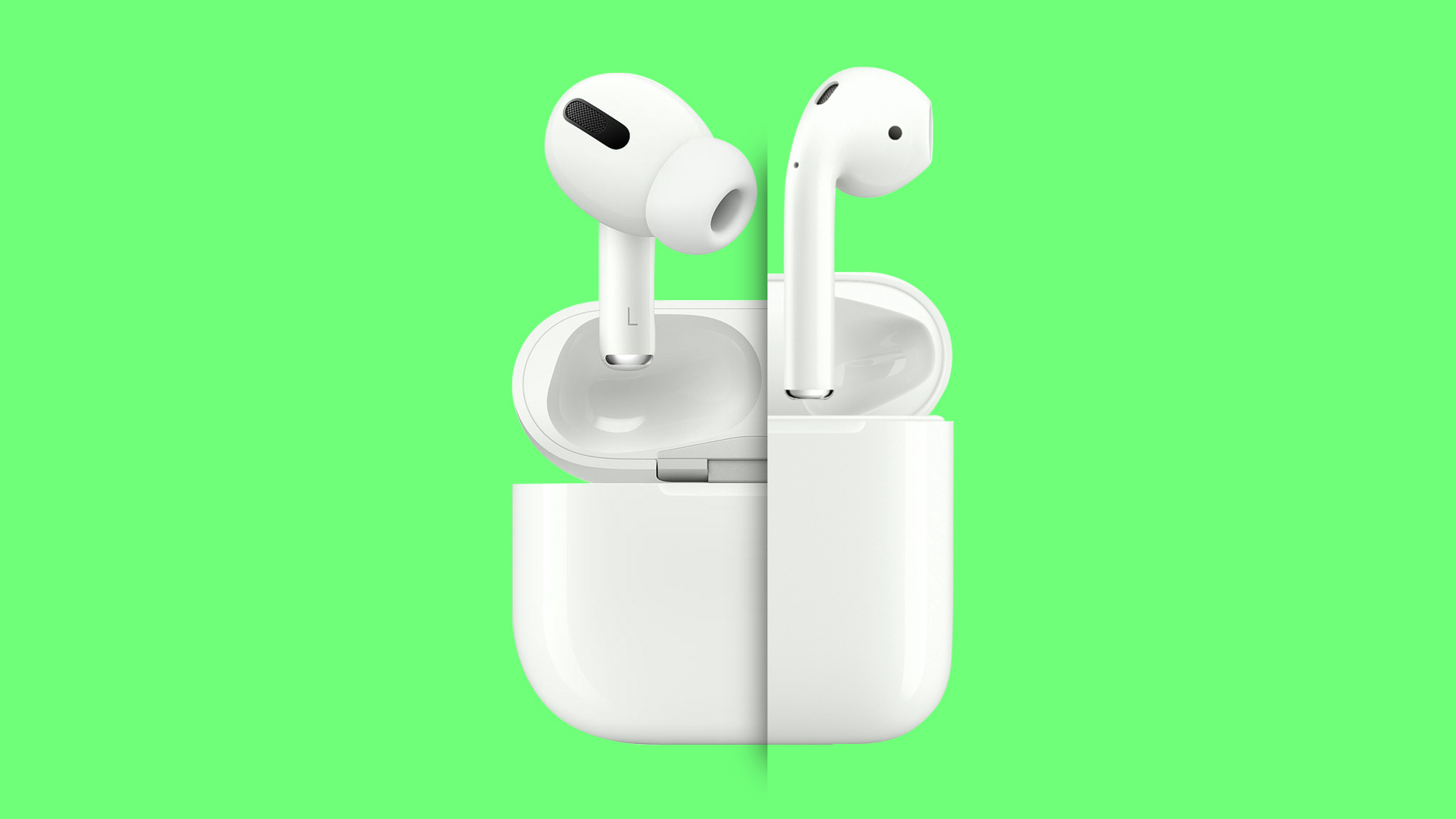
While the new AirPods are expected to look like the AirPods Pro, the third-generation earbuds will be more affordable and will lack higher-end features such as Active Noise Cancellation. Apple is said to be developing a new wireless chip that could be included in the AirPods 3, and battery life could see improvement.
We don't know much else about the AirPods at this time, but we're expecting them to launch in the first half of 2021, likely in the first quarter.
Our AirPods roundup has more on what we could see from the AirPods in the future.
iPad Pro
There have been persistent rumors suggesting Apple is working on a new version of the 12.9-inch iPad Pro, with the tablet expected to gain a mini-LED display. Most of the rumors have focused on the 12.9-inch iPad, but it's possible there's also a refreshed 11-inch model in the works too.
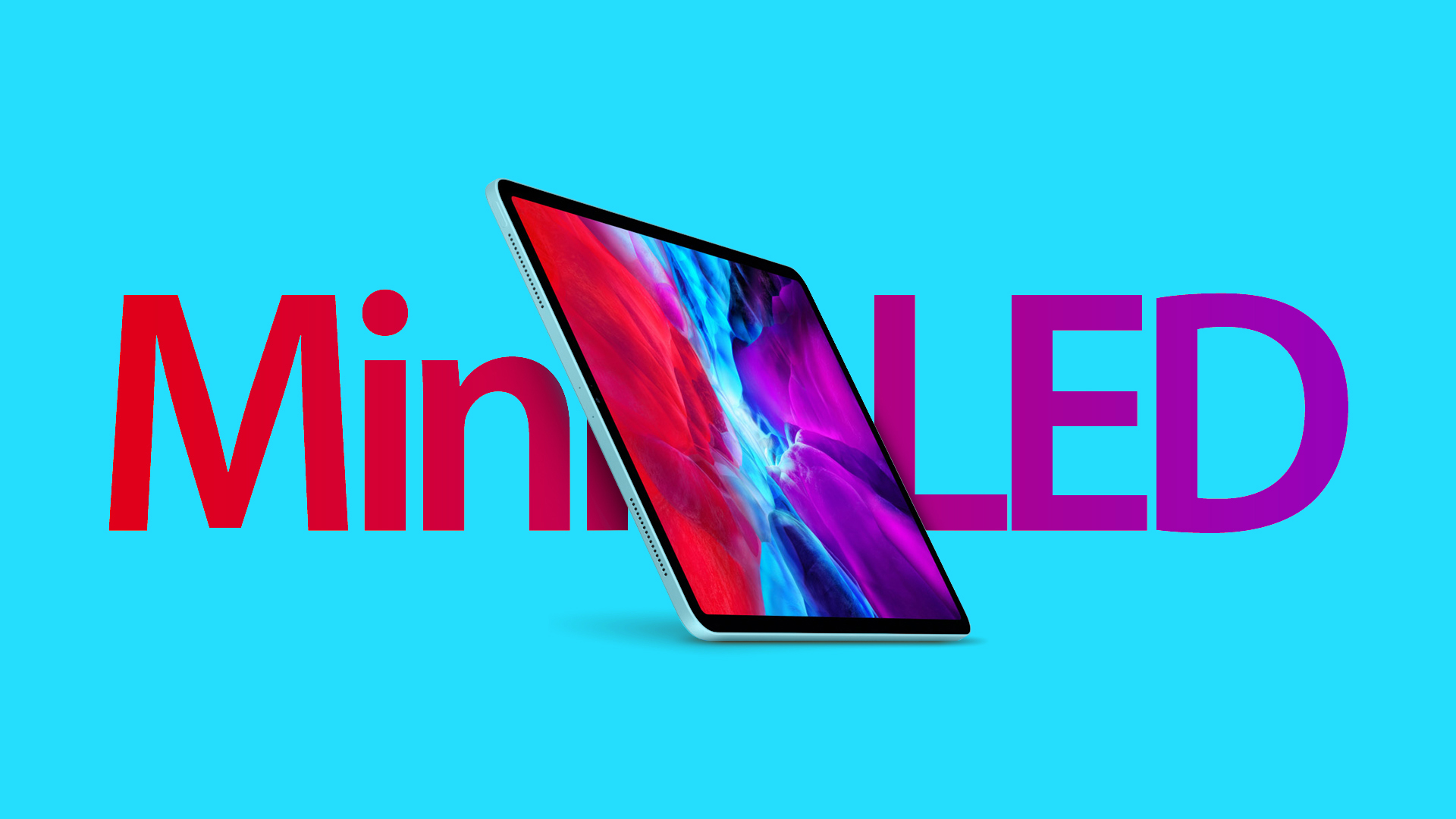
Apple's mini-LED displays are expected to use approximately 10,000 LEDs, with each one below 200 microns in size. Mini-LED technology will allow for thinner and lighter product designs that also offer impressive wide color gamut performance, high contrast and HDR, and local dimming, which dims the backlight behind black areas of the screen while keeping bright parts lit for blacker blacks and improved contrast.
There have also been rumors about an OLED iPad Pro in 2021, but it seems unlikely that Apple is going to introduce two new display technologies in the same year, and analysts have suggested an OLED iPad won't be coming until 2022 at the earliest.
Along with a mini-LED display, the updated iPad Pro could include 5G connectivity now that the iPhones have 5G chips, and it is expected to have a more powerful A14X chip that's similar to the chip used in the M1 Macs. We've also heard some rumors of a new Apple Pencil in black, but that information has yet to be confirmed.
Production on the mini-LED iPad Pro supposedly began in the fourth quarter of 2020, so this is a product that's likely going to be ready to go early on in the year.
We have more information on the iPad Pro in our dedicated iPad Pro roundup.
June Software Updates
Apple holds the Worldwide Developers Conference every year, and in 2021, we're expecting to see iOS 15, iPadOS 15, watchOS 8, tvOS 8, and macOS 12.
Apple previously used incremental numbers for macOS updates, but given that we've already had software updates numbered macOS 11.1, we can assume that macOS updates will now go up an entire number similar to iOS updates.
We don't know anything about any of these software updates as of yet, but we should start hearing details in early 2021.
Second Half of 2021
14.1 and 16.1-inch MacBook Pro
Apple is developing redesigned MacBook Pro models that could come in 14.1 and 16.1-inch screen sizes, replacing the existing 13.1 and 16-inch MacBook Pro models. Now that the entry-level 13-inch MacBook Pro has an Apple silicon chip, Apple is expected to expand Apple silicon chips to the rest of the MacBook Pro lineup.

Both models could have slimmer bezels for more screen real estate. There have been rumors that the new MacBook Pros will have mini-LED displays, which could bring some major improvements in display quality.
Mini-LED displays will use approximately 10,000 LEDs, with each one below 200 microns in size. Mini-LED will ultimately allow for thinner and lighter product designs, offering many of the same benefits as OLED like better wide color gamut, high contrast and dynamic range, and local dimming for truer blacks and superior contrast. Mini-LED displays are expensive, so it's possible that the technology will be limited to higher-end models.
Apple is working on new Apple silicon chips to be used in the next-generation notebooks. Some of the chips in development have as many as 16 power cores and four efficiency cores, with Apple also developing 16 and 32-core GPU options.
These new MacBook Pro models are coming in 2021, but we don't know exactly when. We have more information on both the rumored 14-inch MacBook Pro and the rumored 16-inch MacBook Pro in our respective roundups.
iPhone 13
In 2021, we're expecting four iPhone 13 models in the same sizes the iPhone 12 models are available in with two 6.1-inch models, a 6.7-inch model, and a 5.4-inch model. Two of those iPhones will be higher-end "Pro" models and two will be more affordable models.
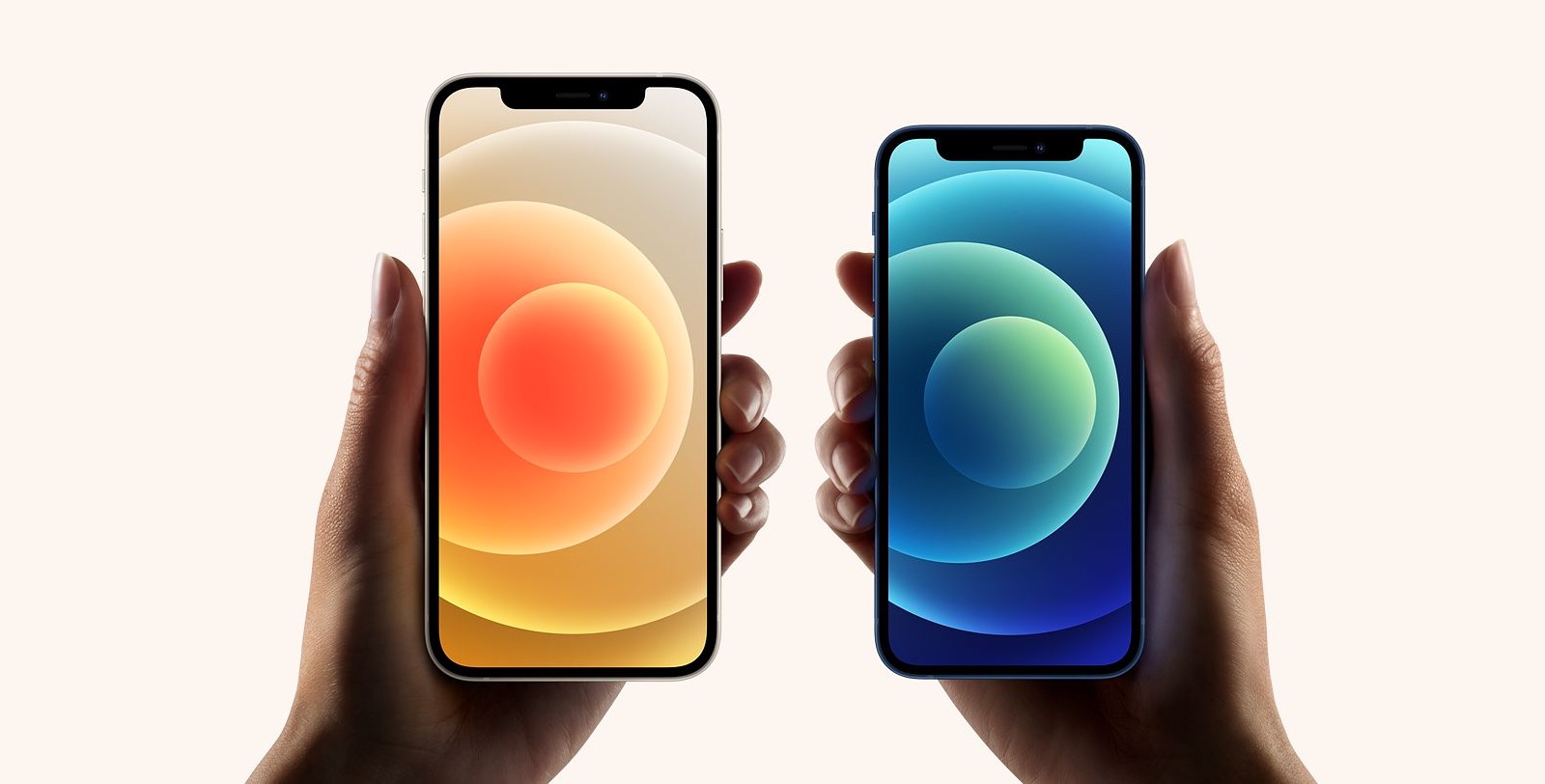
Apple is expected to use the same general design, but at least one of the iPhones that's coming could potentially have a portless design with no Lightning port included. Apple has been working toward a portless iPhone and such a device would be limited to charging with Qi-based chargers or a MagSafe charger.
The new iPhones could have 120Hz "ProMotion" displays for smoother performance, along with new camera technology, a faster A15 chip, and an upgraded 5G modem chip from Qualcomm.
There have been a couple rumors indicating Apple is working on iPhones with both Face ID and under-display Touch ID and it's possible 2021 is the year we'll see that dual-biometric technology, but it is early in the rumor cycle so plans could change.
Our iPhone 13 roundup has more detail on what to expect from the new iPhone models coming in 2021.
iPhone SE 'Plus'
Apple introduced a new version of the iPhone SE with an iPhone 8-style design in 2020, and in 2021, we might get a redesigned "Plus" version of the device. Apple analyst Ming-Chi Kuo says Apple is working on an "iPhone SE Plus" that features a full-screen design, no Face ID, and a Touch ID fingerprint sensor built into the power button on the side of the device.
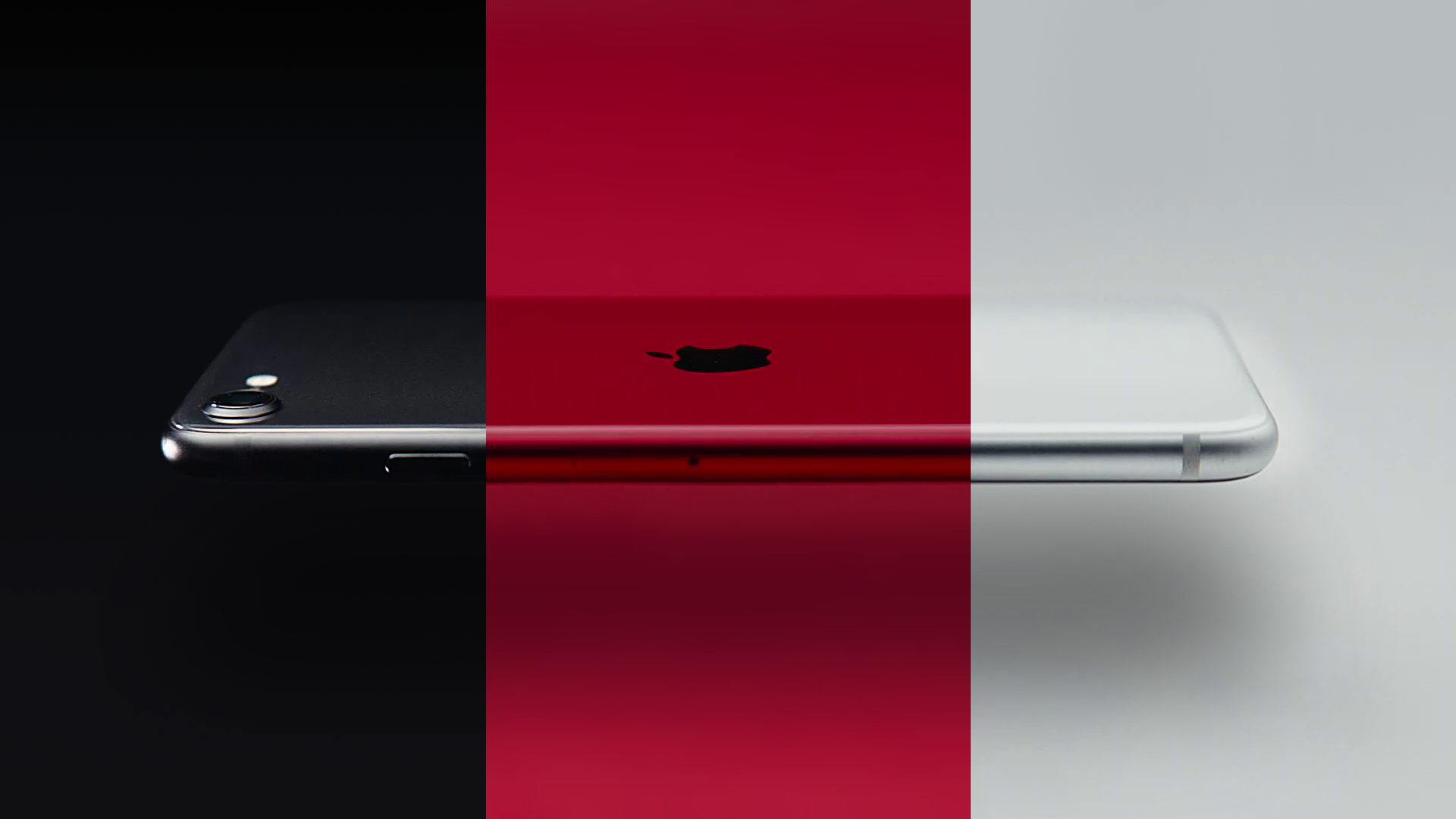
This design would be similar to the iPad Air design which has an all-display build but without Face ID. The iPad Air instead uses a Touch ID power button. The new device is expected to a 6.1-inch display, dual cameras, and perhaps 5G support, which would also make it similar to the iPhone 12. It was initially rumored to be coming in early 2021, but now Kuo believes it will see a launch in the second half of 2021.
Barclays analysts, however, do not believe that Apple has plans to refresh the iPhone SE in the foreseeable future, and display analyst Ross Young has said there won't be an updated version of the iPhone SE until 2022, so it's not guaranteed that we're going to see an iPhone SE this year.
For more on what to expect from the iPhone SE in 2021, we have an iPhone SE roundup with everything we know.
Apple Watch Series 7 and SE 2
Apple introduces new Apple Watch models on a yearly basis, and in 2021, we're expecting the Apple Watch Series 7. We don't know a lot about the Series 7 at this time, but new health functionality is a possibility, as is an Apple Watch design that adopts solid state buttons that don't physically click.

Apple has been researching a method for non-invasively measuring blood glucose levels, but it's not yet known if this kind of sensor will be included in the 2021 Apple Watch.
Along with the Series 7, there's a chance we could also get a new version of the Apple Watch SE. Apple introduced the Apple Watch SE in 2020 as a lower-cost alternative to the Series 7 that still has mostly modern technology inside.
Higher-End Apple Silicon iMac (Pro?)
As mentioned up above, Apple is working on multiple versions of the iMac, including a higher-end model with a more powerful Apple silicon chip. Bloomberg has suggested that Apple will launch new iMac models at different times, so we could see this higher-end model later in the year.
Products With Unknown Release Dates
AirPods Pro
Apple is developing a new version of the AirPods Pro that could feature a more compact design and a new wireless chip. The next-generation version could eliminate the short stem that sticks out from the bottom, resulting in a more rounded shape that's closer in design to competing wire-free earbuds from companies like Google and Samsung.
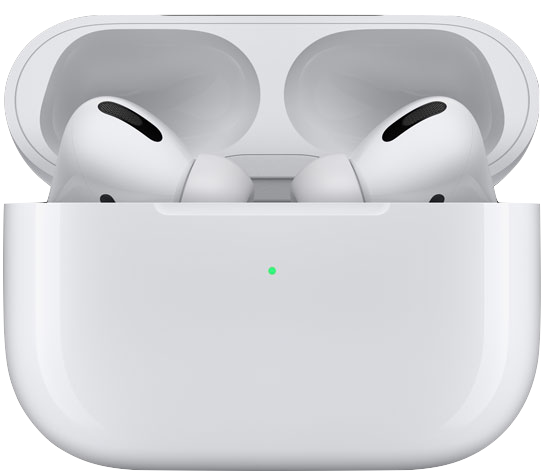
Based on hardware leaks, there is a possibility that the AirPods Pro 2 could perhaps come in two sizes, but that has yet to be confirmed.
We have more about the next-generation AirPods Pro in our AirPods Pro roundup.
iPad Mini 6
According to Apple analyst Ming-Chi Kuo, Apple is working on a new version of the iPad mini that could measure in at 8.5 to 9 inches, perhaps through a reduction in the bezel size of the current 7.9-inch model.

This model could perhaps include a mini-LED display, as Apple is rumored to be bringing mini-LED technology to several iPads in the iPad lineup. A mini-LED display would allow for a thinner, lighter design without compromising on display quality.
Kuo and other sources have said the iPad mini will come in the first half of 2021, with more details available in our iPad mini roundup.
New Apple TV
The last Apple TV update came in 2017, so it's starting to feel like we're overdue for an update. Luckily, multiple sources have suggested we can expect to see a new model launch in 2021.

Rumors suggest the next-generation Apple TV could be equipped with either an A12X Bionic chip or the same A14 chip used in the 2020 iPhones. A higher-powered chip would allow the Apple TV to offer better performance for iOS games.
Next-generation Apple TV models could also have more storage, coming in 64 and 128GB storage options, and there's said to be a new remote control that will be offered alongside it. It could have a Find My feature for locating the remote when it's lost inside the house, and there are also rumors of a U1 chip, something also added to the HomePod mini. Like the HomePod mini, the Apple TV serves as a Home Hub, which might be why Apple plans to include a U1 chip.
The U1 chip enables Ultra Wideband support for improved spatial awareness between devices, with the feature allowing the distance between two devices to be calculated through the time it takes for a radio wave to pass between them. It's more accurate than tracking via Bluetooth LE and WiFi and could be used for precise indoor positioning for controlling smarthome devices.
While unconfirmed, there are also some rumors that have suggested Apple could also unveil a higher-end version of the Apple TV that offers console-like performance, with Apple working with developers to bring console-level games to the Apple Arcade service in the future.
Additional details on what to expect from an Apple TV update can be found in our Apple TV roundup.
AirTags
Apple's long-rumored Tile competitor AirTags have been in the works for quite some time, and we don't know when we might be seeing them. AirTags were originally expected in 2020, and there are no rumors on a specific launch timeline.
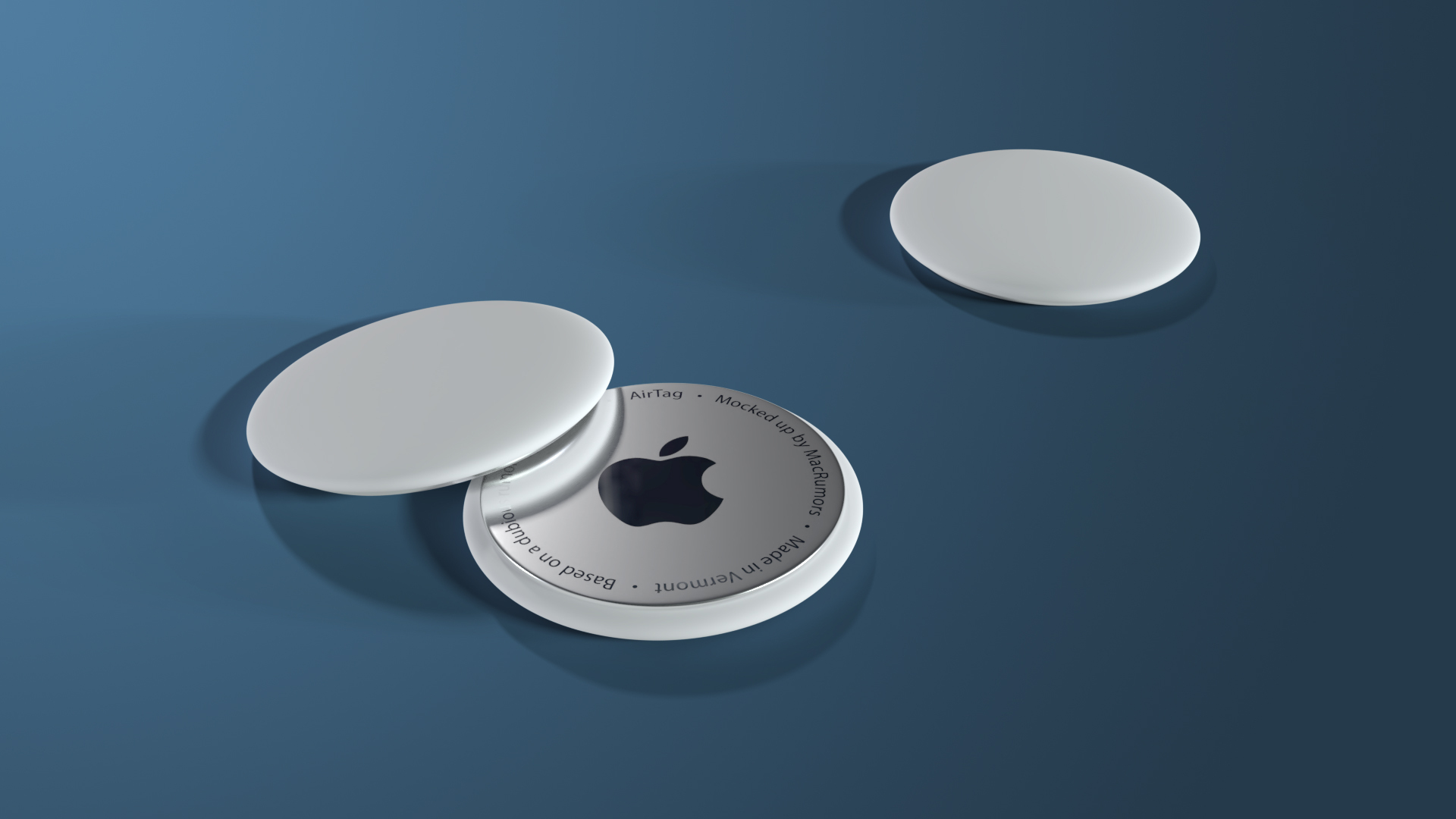
AirTags are small trackers that are equipped with Bluetooth and are designed to attach to important but easily lost items like wallets, cameras, and keys. AirTags (and the items they're attached to) can be tracked right inside the Find My app alongside iPhones, iPads, and Macs, so you can keep an eye on all of your important belongings in one place.
Info about AirTags has been leaking since the release of iOS 13, but we're still not sure what the AirTags will look like. Based on some simple images found in iOS, they could be small, circular tags with built-in Bluetooth and ultra-wideband support. Ultra-wideband, a feature first introduced in the iPhone 11 lineup, is key because iPhones that have a U1 chip will be able to track AirTags with much more accuracy than Bluetooth alone.
If your keys fall down the couch cushion or your wallet gets kicked under the bed, for example, the iPhone will be able to locate the exact part of the room where they're located. This kind of functionality will make AirTags more accurate and more useful than other Bluetooth trackers on the market.
AirTags might attach to items with rings or adhesive, and the bottle cap-sized trackers are rumored to come with a keychain that has a leather pouch on it, which may be one of the attachment methods.
There have been mixed rumors on charging methods. One rumor has pointed towards a built-in rechargeable battery that works with an Apple Watch-style charging puck, while another suggests the AirTags will run on a replaceable CR2032 battery. Either way, it sounds like they'll last for a good amount of time rather than featuring a non-replaceable battery.
Anything that you lose will show up on the Find My map with an associated address, and when the iPhone is close to a lost item, you might see an augmented reality map with specific positioning that makes it easier to find the missing item. AirTags will also be able to play a sound when triggered in the Find My app.
With iOS 13, Apple introduced a feature that's designed to let Apple products communicate with one another when offline, letting a lost iPhone ping off of someone else's iPhone it comes into contact with even without a cellular or WiFi connection. This function will likely come to AirTags as well, letting millions of iPhones and Apple devices all around the world track lost items.
We have additional details on AirTags in our full AirTags guide.
Smart Glasses
We know Apple is working on some kind of augmented reality headset or smart glasses, but when this head worn AR product will launch continues to be a mystery.

There haven't been many augmented reality headset rumors as of late, but there have been rumors targeting launch dates ranging from late 2021 to 2023, so there's a chance we'll see some kind of augmented reality device this year.
Rumors indicate there are two projects in the works that include a set of smart glasses and a separate headset, with the latter device supposedly launching first. The headset is rumored to be similar to Facebook's Oculus Quest, but with a sleeker, lighter weight design.
It's said to include a high-resolution display with built-in cameras, along with technologies like 3D environmental scanning and advanced human detection. Apple is aiming to create an App Store for the headset with a focus on gaming, streaming video content, and video conferencing.
There are a lot of mixed rumors about Apple's AR and VR work given that the company has worked on several different prototypes, and our AR roundup has a great overview of everything we know.
Wrap Up
Apple has quite a few exciting products in the works for 2021 based on what we know so far, and we'll likely see some unexpected surprises as well. Make sure to follow MacRumors.com and the MacRumors roundups over the course of 2021 to keep up with all of the rumors about the upcoming products that Apple has in development through our What to Expect Guide.
Article Link: What to Expect From Apple in 2021: New Apple Silicon Macs, iPhone 13, AirTags and More
Last edited:
YeS. Don’t you wonder whether they’ll go after your industry this year?Is there ever not an exciting year with Apple?.....and the beat goes on
Does this mean the iMac will only be available in the smaller size and to replace my 27" iMac, I'll have to get an iMac Pro at twice the price? Please hurry and call me an idiot for getting this wrong, I'm too poor to be right.it's possible we're going to see the long-rumored 23 to 24-inch model early in the year, followed by a higher-end model later in the year.
Perhaps continued momentum from when things were not as fragmented could be a reason? An example that coves to mind is the iPad. The iPad choices right now are overwhelming and unnecessary. Is there a reason for different iPads, each with multiple skus? I think the market is different enough now due to the share Apple has, but will the fragmentation hurt in the future? IDK.I agree with your observation to a point In the comparison to the Scully era. The difference is that the company is thriving right now even with all of the product fragmentation. Under Scully, Apple almost went belly up. I wonder why the different successes now as opposed to the mid to late 90s. Similar fragmentation, different results it would seem.
My son is diabetic. He wears a continual glucose monitor that transmits his blood sugar readings to his Apple Watch (and my and my wife’s Apple Watched). It’s nice, but ever 10 days we have to change the sensor and because it involves a needle puncturing his skin, it’s a massive battle every 10 days to get him to do it. A non-invasive glucose monitor would dramatically change our lives. I can’t understate how great that would be for diabetics.
The quantity of money they are cashing is massive. Going up to the trillion they should be broken up sooner than other companies.My thought too, which is another reason why the RAM on the entry level devices is 8gb. The M1’s appear to be fairly robust performance wise, but it’ll be fairly easy to plan 8gb of ram as the bottleneck to motivate people to upgrade after 3 years.
Wouldn't they just allow for this in their costs as it is a business cost?I hope they also lower fees for app store businesses. Its sad to see the developers loose 30 or even 15 percent of the hours and investments they use to build code.
Nobody loses anything as if the store didn't exist how would they be selling their apps?
For me the whole App Store is yet another great reason to stick with Apple, and all these app developers benefit from this.
Iphone 21I doubt it, they didn't skip iOS 13, why would they skip iPhone 13?
Agreed. My boy has a blood sugar issue not related to diabetes but that impacts his ability to think and control his emotions. If we had a non-invasive monitor to alert us we could better understand his condition and he could learn to eat before he can’t deal.My son is diabetic. He wears a continual glucose monitor that transmits his blood sugar readings to his Apple Watch (and my and my wife’s Apple Watched). It’s nice, but ever 10 days we have to change the sensor and because it involves a needle puncturing his skin, it’s a massive battle every 10 days to get him to do it. A non-invasive glucose monitor would dramatically change our lives. I can’t understate how great that would be for diabetics.
All I want from Apple is an enormously greater focus on software quality control...
You're gonna need to be a _teeny_ bit more specific.
Apple's software may not be "perfect", but it's the best in the industry. They do need more robust and comprehensive release testing, though. There are some issues that should be caught sooner, but in terms of overall software stability and reliability, Apple sets the bar for the industry.
You think the number 13 is a problem?iPhone 13? No way that’s happening!
I’m personally hoping Apple extends their brilliant “Max” naming scheme to the Mac line up. Think of the fun:
——
Which Mac are you getting?
The Max
So you’re getting two?
No, just one.
But you just said...
——
Hours of entertainment, just from this one word.
——
Which Mac are you getting?
The Max
So you’re getting two?
No, just one.
But you just said...
——
Hours of entertainment, just from this one word.
I want 120fps MacBooks and iPhones.
if not this year, it is becoming an unacceptably long wait for this feature.
if not this year, it is becoming an unacceptably long wait for this feature.
iPhone 13? No way that’s happening!
And why not?
Can't wait for the 16 inch Macbook Pro!!!
New iPhone 13 Pro Max!!! Possibly with a new flagship color? Burgundy/Red/Product Red???
View attachment 1704285
There will certainly be a new colour every year now.
Not gonna lie... I might drool seeing the Apple Silicon iMac.
I agree Apple is taking a different path than when Steve Jobs was setting product strategy but I'm not sure it's a bad thing or reverting to the Scully era. The iPhone I want and am willing to pay for is different than what my kids want and are willing to pay for. Between us we have a Pro, a Mini and an SE and all happy with our choices. Apple couldn't continue the one model for everyone strategy. Under Scully, Apple had an obsolete operating system, ugly and undifferentiated hardware and no evidence of a long term product strategy. Apple today seems to have a pretty well integrated hardware, software and services roadmap that seems to be working reasonably well. I just wonder if they can do hardware and services well in the long term.absolutely! I’m finding Apple’s product fragmentation under Cook to be reverting to Scully era. Not just naming schemes but too many of the same lines with ”Pro“ being mostly an excuse to add a wanted feature onto the higher end models and charging more. I’d also love to see a dedicated display line as Apple had in the 2000’s - most don’t need a $6000 display but a nice solid display. I miss the 30” and 23“ CCFL LCD‘s. It wouldn’t be a big cost issue for Apple to use an iMac LED panel in a display chassis and sell them. unlike some I’m loving my LG 5K UltraFine displays - have 3 with my Mac Pro’s - but I wouldn’t mind a nicely designed Apple display along with a midtower Mac Pro. There’s definitely a lot of people who don’t need or want an iMac Pro as they have external displays and need an upgradeable system.
a guy can dream... meanwhile, cut back on the product fragmentation and simplify and streamline products.
I do agree a reasonably priced 23" - 32" display based on either the current or next iMac screens would be a good add the the product line-up. Also agree the MacBook product line could be simplified and the naming really needs fixed. I could see a 12" Mac Book Air and a 14" MacBook to replace the 2 current "Pro" models and a 16" MacBook Pro.
Register on MacRumors! This sidebar will go away, and you'll see fewer ads.


